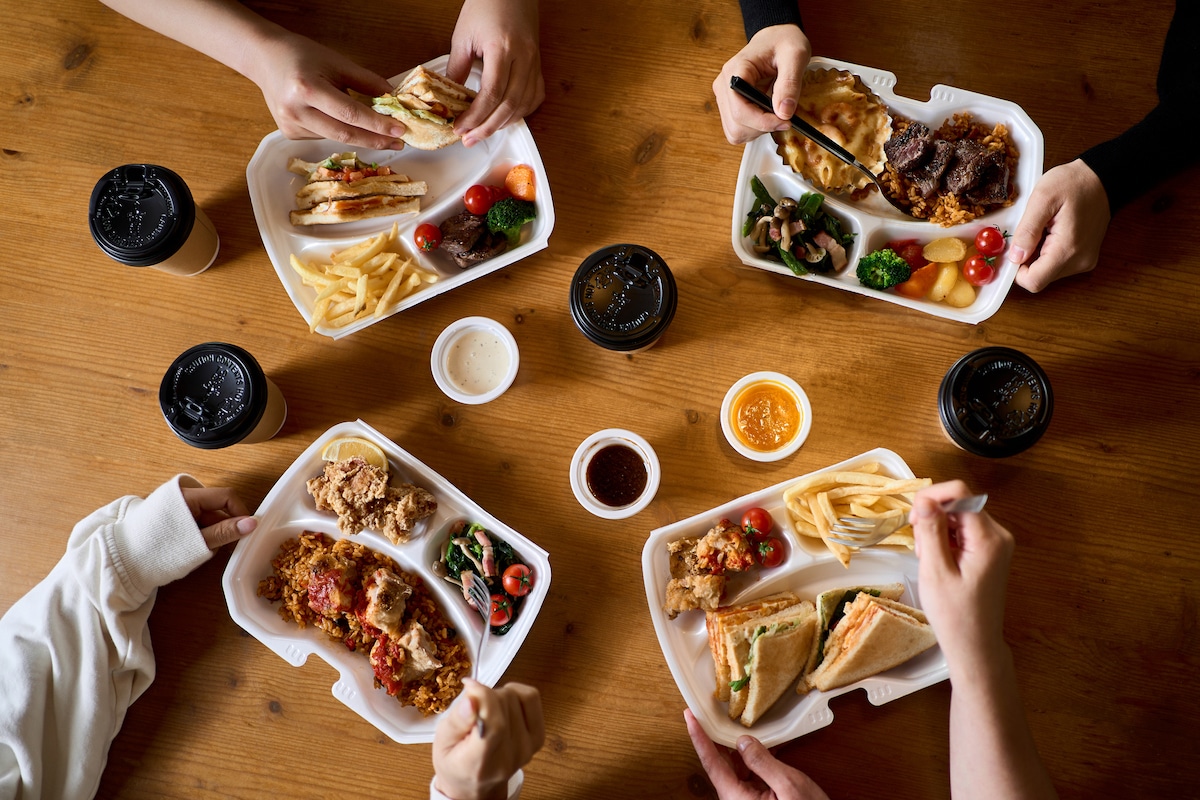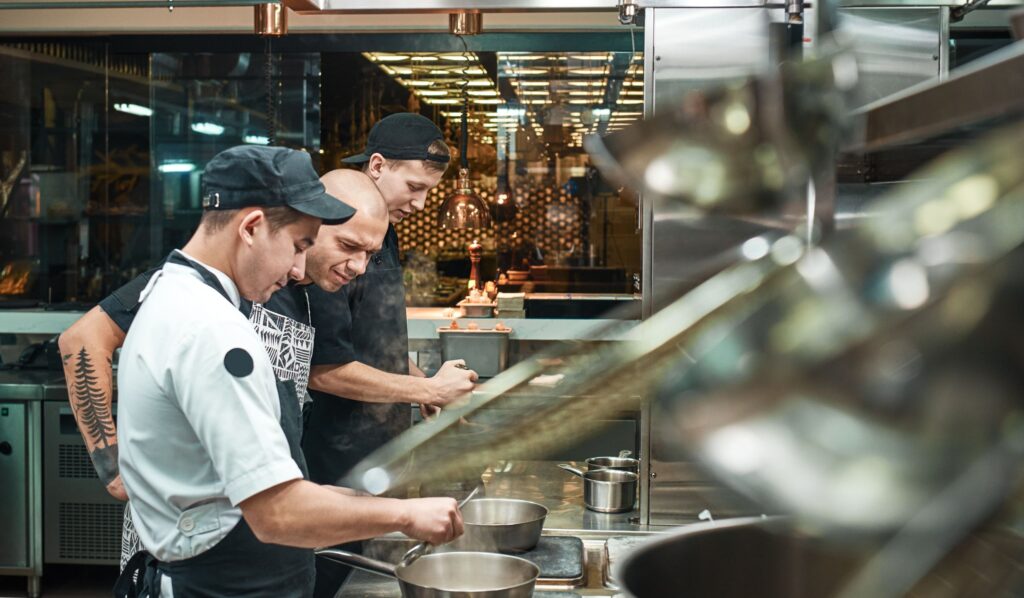Lunch is getting out of control. For many diners, what was once a quick, welcome break from a hectic workday, a solo meal to recharge the batteries, or a chance to leisurely catch up with friends or colleagues is now weighing heavily on their wallets and restaurants’ bottom lines.
In Los Angeles, guests (including John Legend and Crissy Teigen) are feeling the squeeze at the beloved taco truck Tacos y Birria La Unica, according to NPR.
“The vegetables, the meat, everything” is going up in price, said owner Yasmany Mendoza. “For example, the oil we use for the food truck used to be worth $20, now it’s $40. A box of lemons used to be $20 to $25, and now it’s like $80. Avocados used to be $30 a box; now it’s like $60.”
As such, Mendoza, like many owners and operators around the country, has had to carefully raise prices to accommodate the new economic reality. Inflation fell from June 2022’s staggering 8.6% to a still challenging 6.5% in December, according to the Bureau of Labor Statistics. Yet the cost of salads, sandwiches, burgers, and tacos has steadily risen across the country over the past two years.
From early 2020 to early 2022, according to Square, the price of wraps increased by 13% from $9.05 to $10.21, sandwiches climbed 15% from $9.40 to $10.77, burgers rose 9% from $10.15 to $11.10, and the humble soup leaped 28% from $7.41 to $9.47.
Staying profitable while providing great food, service, and experiences is no simple task. But with the right combination of technology, cost-control strategies, and some menu engineering (plus a whole lot of tenacity and patience), restaurant management teams will be better equipped to navigate through inflation without losing the path.
Get Visibility and More with Technology
For any flavor of restaurant company and leadership team, managing through an inflationary period or any challenge while consistently improving guest experiences, margins, and profits, requires a detailed understanding of performance at a moment’s notice. That’s why it’s essential to have an all-in-one system integrated with your POS and other vendors. Top-line and bottom-line numbers are good, but managers at all levels need the ability to drill down into the numbers to bring any challenge or opportunity into focus so they can quickly leap into action to, for example, mitigate runaway ingredient costs or streamline staffing to save on labor.
While the buzz of automation has hummed around the flashiest technology — think robot bartenders — many restaurants are already using its less alluring siblings and getting a huge benefit. Just think about the labor time saved with automated to-go and delivery ordering systems. Back-office function automation can be just as powerful and cost-saving.
With an end-to-end restaurant management system that automates various tasks, restaurants can streamline the creation and distribution of reports that reveal margins on all menu items and how they’re shifting.
For years, producing these kinds of reports was labor intensive, prone to errors, and took so long that the results were barely helpful. When the back office no longer needs to spend untold downloading, merging, reviewing, and uploading data to various systems, they can point their detail-oriented eyes at the big picture and find ways to boost the bottom and top lines despite lingering inflation.
Pull The Cost Control Levers
Better visibility into how each restaurant location or the overall company is performing provides more opportunities to tweak different inputs to maximize results.
Among the most important, if not the most important, is restaurant prime cost. This is the combination of each location’s ingredient and labor costs, which in most cases accounts for 60% to 65% of total revenue. The ability, or inability, to accurately control prime costs directly correlates to a restaurant’s profitability. With accurate, real-time visibility into prime cost drivers, the question becomes what to do with that information. First is forecasting and budgeting for purchasing and labor.
With a restaurant sales forecast, you can predict the precise amount of future product needed by looking at historical consumption patterns and the shelf life of your finished raw and finished ingredients. From that data, you can determine that you’re using X amount of product that costs Y dollars and generates Z in revenue. Then you can start to dial into exactly how much product you need.
When forecasting labor periods, you’re looking at the historical sales in each period for fluctuations throughout the day. Look at what you did last week and month, and drop that into the matrix. When developing a matrix, you want to determine how many employees you need per dollar of sales. For example, if you’re going to do $500 in sales, ask yourself what that looks like in terms of staff. How many servers and line cooks do you need for $500? How many do you need for $1,000 or $1,500? Then, keep building on the matrix until you’ve determined exactly what’s needed from open until close.
These forecasts and a restaurant management system where you can upload recipe data form the foundation of your theoretical food and labor costs. Actual vs. theoretical (AvT) food or labor cost analyses showcase what you should have spent on each, based on sales, versus what you actually paid, helping to pinpoint where you can create efficiencies and plug leaking margins and profits.
By identifying those areas where there’s a variance — the difference between what you planned for and spent — you can then dig into the data, locate problems like overstaffing or waste, and take measures to stop them.
Start Menu Engineering
With reliable, up-to-date data, you can start examining various aspects of your menu to see what you can alter with menu engineering tools to maintain margins despite the ongoing economic challenges. The first step is to identify the four categories of dishes. They include stars: dishes with high margins and high sales; opportunities: dishes with high sales but less than ideal margins; puzzles: dishes with high margins but low sales; and the dogs: dishes with low sales and low margins that you should seriously consider removing from your menu.
In the meantime, consider ways to drive more sales of your stars and puzzles while improving the profitability of your opportunities.
Deploy Decoys
For stars and puzzles, place them in the top third of your menu, where readers’ eyes are naturally drawn. A decoy is a highlight, such as a box or white space, around a higher-priced item next to a lower-priced item with a higher contribution margin. Imagine a $34 filet mignon boxed alongside a $24 bavette steak. While the filet boasts a higher price, the bavette’s margin is far higher due to the lower wholesale cost. By placing it next to a high-priced item, which diners often avoid or feel bad about ordering, you guide the guest toward the dish that will most benefit your bottom line.
Rethink the Menu
A larger, more complex menu means more staff. The combination of rising food costs, unreliable product availability, climbing labor costs, and limited staff availability means that dishes and menus once offered without a second thought are either under review or a thing of the past. Some restaurant owners have even halved their menus to deal with this new reality.
Open Up Opportunities
When it comes to opportunities and how to turn them into stars, there are a few different solutions:
- One solution would be to source cheaper ingredients or make swap outs to reduce cost.
- An alternative would be to raise the price; however, be careful when playing with prices. These dishes may be popular because they’re inexpensive. You don’t want to kill sales by immediately raising prices.
- Watch portion size. Could you serve smaller portions for the same price? Watch customers for a few days and see how much returns to the kitchen to determine reductions.
- Make sure your kitchen is consistent with portion sizes. Provide training and appropriate measuring utensils for portioning and supervise them to ensure proper portioning.
Conclusion
The need to use every tool available to maintain margins as the cost of creating lunchtime favorites is even clearer when looking at recent restaurant sales and traffic. At sandwich chain Subway, for example, same-store sales rose 7.8% in 2022 in its North American markets compared to 2021, according to Restaurant Dive. While the company didn’t say whether inflation or pricing changes led to the increase, Chili’s parent company Brinker International reported a 3.8% jump in sales at the end of 2022 as foot traffic fell by 6.6% during the same period.
While total revenue may be on the rise due to increasing prices, it’s clear more of that is being eaten up by either higher costs or, possibly, fewer guests due to higher prices. With so much pressure bearing down on the industry, it’s more important than ever to continually control costs to preserve margins and move toward continued growth.



